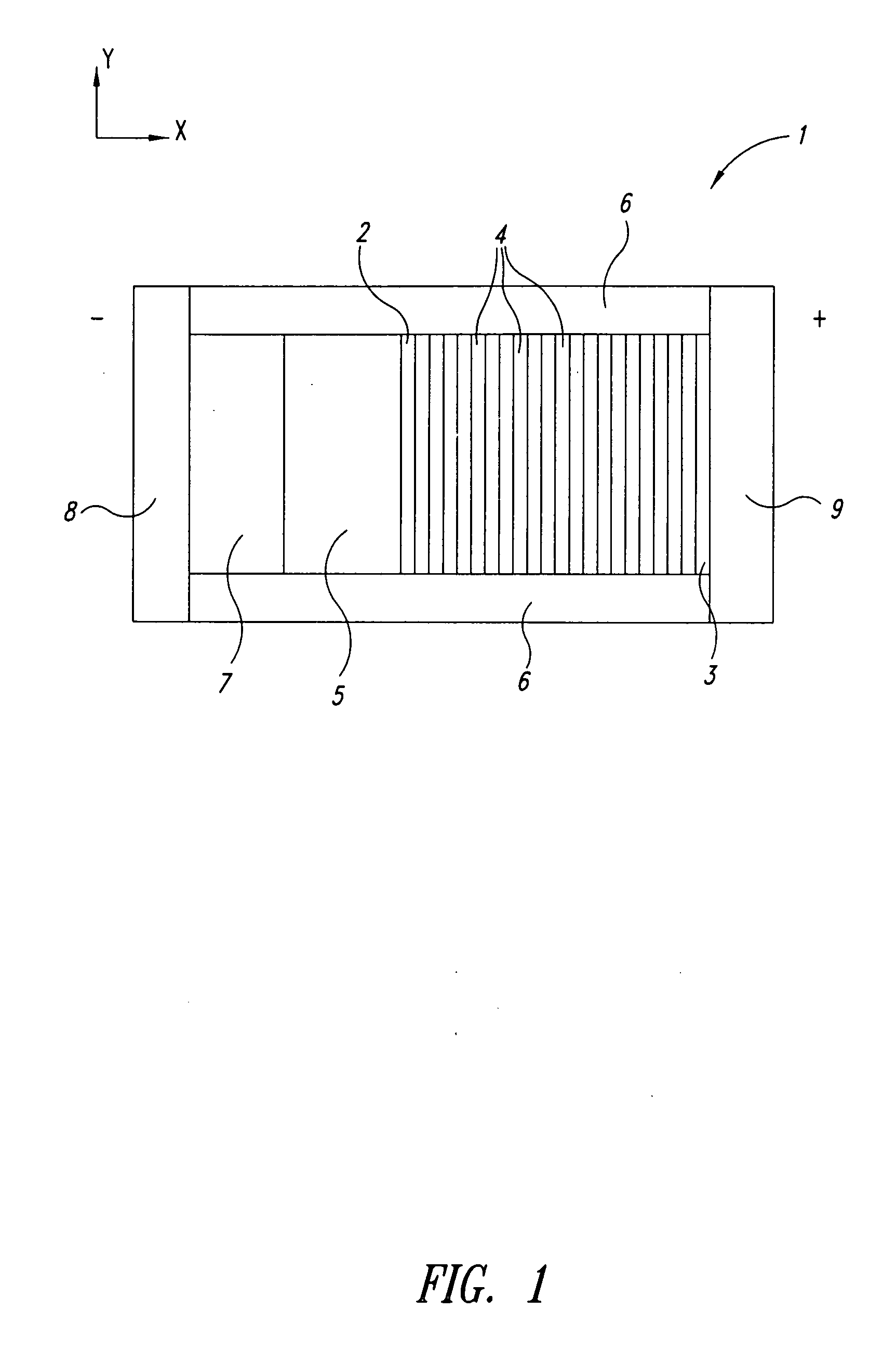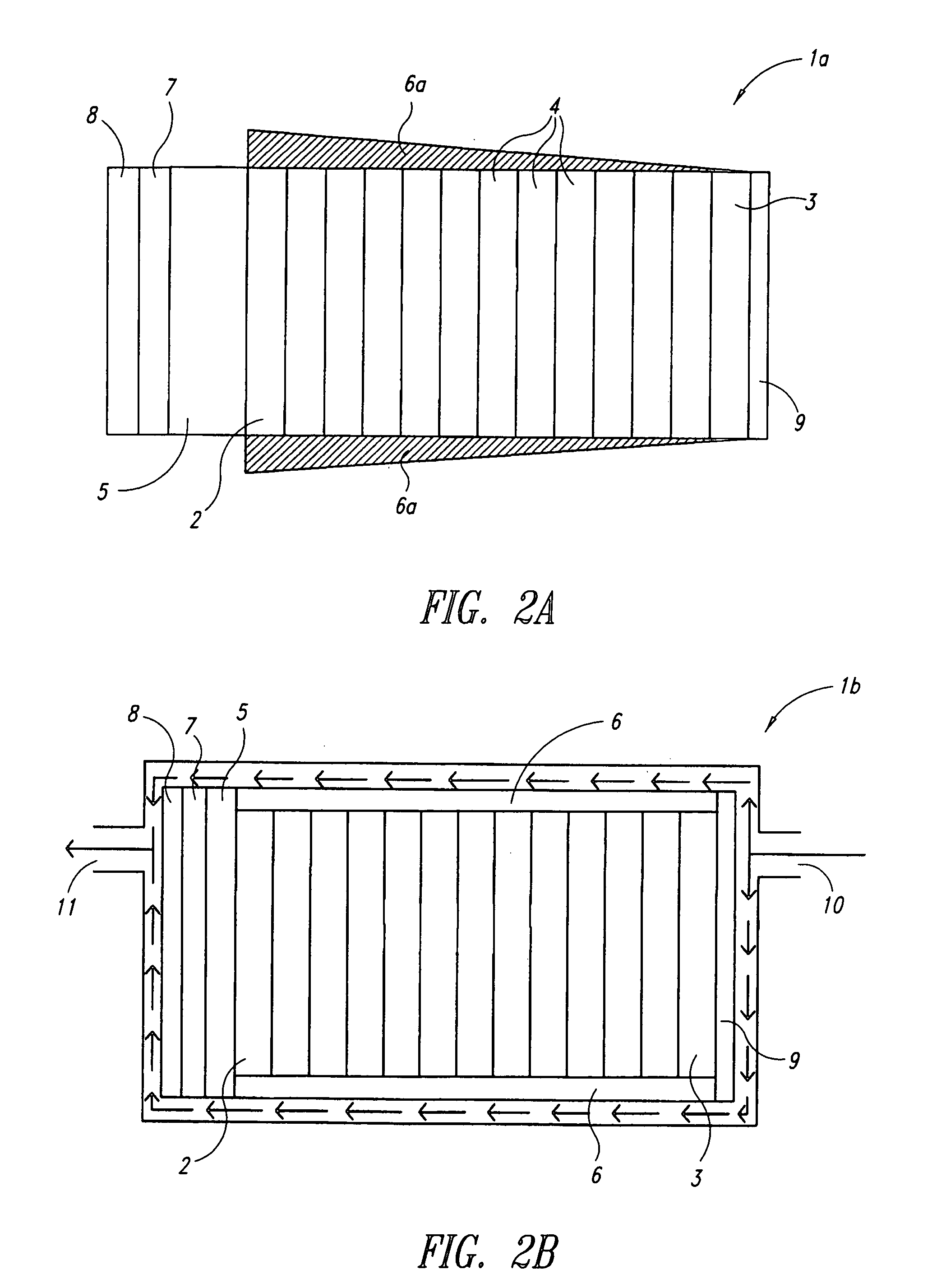Shutdown methods and designs for fuel cell stacks
- Summary
- Abstract
- Description
- Claims
- Application Information
AI Technical Summary
Benefits of technology
Problems solved by technology
Method used
Image
Examples
example 1
[0040] In this Example, a one-dimensional heat and water transfer model was developed to model the water distribution in a fuel cell stack as it cools naturally during shutdown. A high aspect ratio SPE fuel cell stack was also made to determine the actual water distribution and to validate the model.
Model
[0041] In the following, a one-dimensional unsteady heat conduction model was used to determine the temperature and the temperature differential across a cell as a function of time and location in stack. Then, the water transfer across a membrane electrode assembly, MEA, during natural cooling of the partially insulated stack was modeled using a previously determined empirical correlation for water transfer rate as a function of temperature and temperature gradient. (This correlation was determined by measuring the amount of water transferred in a cell from one flow field plate to the opposing flow field plate when a specific temperature gradient was established ...
example 2
[0051] In this Example, a model similar to the above was used to select a thermal mass suitable to effect an adequate water transfer in all the cells in the stack as it cooled during shutdown. The thermal mass would be located adjacent the end cell at the hot end of the stack. An experimental stack with the selected thermal mass was then made and the results upon shutdown were compared to those predicted by the model. The experimental stack was similar to that employed in the Example 1 except 1) for the inclusion of the thermal mass, 2) that thicker thermal insulation was used, 3) that the aluminum plate used at the cold end of the stack had better heat rejection characteristics, and 4) that the polarity of the stack was reversed (i.e., the hot end was the cathode end, and the cold end was the anode end).
Model
[0052] The model used here was similar to that used in the preceding Example except that it took into account a significant thermal mass included at the hot (cathode) end of...
PUM
 Login to View More
Login to View More Abstract
Description
Claims
Application Information
 Login to View More
Login to View More - R&D
- Intellectual Property
- Life Sciences
- Materials
- Tech Scout
- Unparalleled Data Quality
- Higher Quality Content
- 60% Fewer Hallucinations
Browse by: Latest US Patents, China's latest patents, Technical Efficacy Thesaurus, Application Domain, Technology Topic, Popular Technical Reports.
© 2025 PatSnap. All rights reserved.Legal|Privacy policy|Modern Slavery Act Transparency Statement|Sitemap|About US| Contact US: help@patsnap.com



